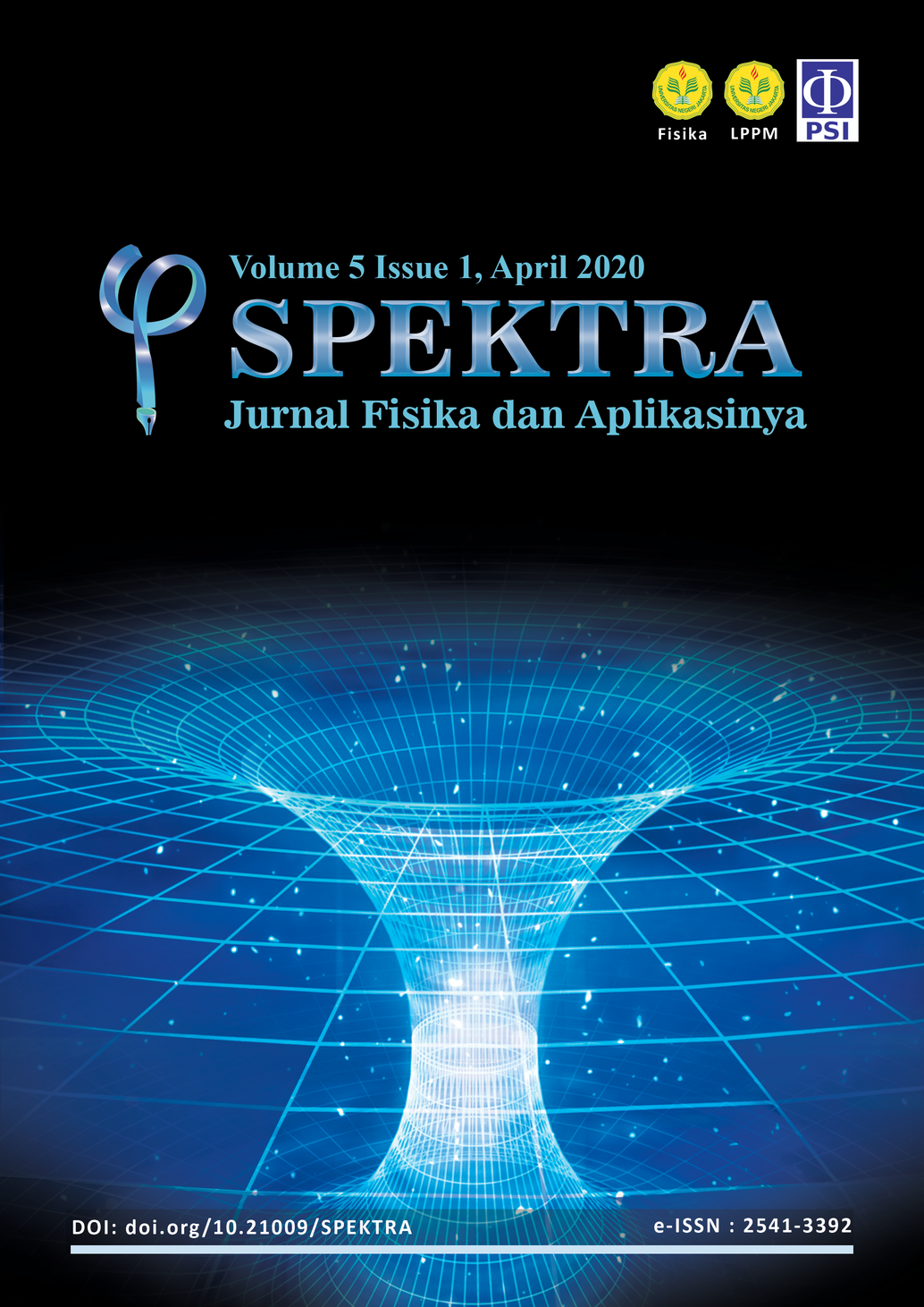DESIGN OF METAL HEAT CONDUCTIVITY MEASUREMENT USING PROBE METHOD
DOI:
https://doi.org/10.21009/SPEKTRA.051.08Keywords:
heat conductivity, measurement, metal, probe, LM35Abstract
This study aims to design a tool that can measure the heat conductivity of metals by the Probe method. The design method was used by using a heat-flowed metal beam and the use of an LM35 temperature sensor to measure temperature changes on the probe. We are designing a measurement system based on conduction heat transfer. The metal used in the design is aluminum and carbon steel. For each metal tested, an LM35 temperature sensor is placed on the metal to find out that a temperature change has occurred. The conductivity value can be obtained from the temperature difference between the probe and the metal being tested, the temperature change of the probe, the temperature change of the metal being tested, and the heating time. This value is processed and calculated by the microcontroller into the value of heat conductivity. The measurement results show that the average heat conductivity value is 214.93 W/moC for aluminum and 53.81 W/moC for carbon steel.
References
[2] S. I. S. de Souza et al., “Numerical investigation of convection in tubes with aluminium and carbon steel fins: evaluating the assumption of convective heat transfer coefficient as that for the tube without fins and relating physical processes with the optimum spacing between fins,” Journal of the Brazilian Society of Mechanical Sciences and Engineering, 2019.
[3] L. Wang, et al., “Electromagnetic interference shielding MWCNT-Fe3O4@ Ag/epoxy nanocomposites with satisfactory thermal conductivity and high thermal stability,” Carbon, 2019.
[4] G. Baldinelli, et al., “Thermal conductivity measurement of insulating innovative building materials by hot plate and heat flow meter devices: A Round Robin Test,” International Journal of Thermal Sciences, 2019.
[5] H. Ao et al., “Accelerated lifetime test of vibration isolator made of Metal Rubber material,” IOP Conference Series: Materials Science and Engineering, 2017.
[6] W. Adamczyk et al., “CFD estimation of heat losses in thermal conductivity measurements,” Computer Assisted Methods in Engineering and Science, 2017.
[7] O.S. Samuel et al., “Thermal conductivity of three different wood products of Combretaceae family; Terminalia superb, Terminalia ivorensis and Quisqualis indica,” Journal of Natural Sciences Research, 2012.
[8] N. J. Kotlarewski et al., “Thermal conductivity of Papua New Guinea balsa wood measured using the needle probe procedure,” BioResources, 2014.
[9] K. Manohar et al., “Measurement of apparent thermal conductivity by the thermal probe method,” Journal of Testing and Evaluation, 2000.
[10] S. Goodhew and R. Griffiths, “Analysis of thermal-probe measurements using an iterative method to give sample conductivity and diffusivity data,” Applied Energy, 2004.
[11] A. Dragomir et al., “Temperature logger for Electrical Equipment's Thermal Stress Monitoring. in 2019 8th International Conference on Modern Power Systems (MPS),” IEEE, 2019.
[12] F. Shirmohammadi and A. Tohidi, “Experimental and Numerical Analysis of Chaotic Advection as An Efficient Approach to Maximize Homogeneous Laminar Mixing in A Batch Mixer,” Brazilian Journal of Chemical Engineering, 2019.
[13] E. H. Goud et al., “Real Time Based Temperature Control Using Arduino,” International Journal of Innovations in Engineering and Technology, 2017.
[14] F. H. Danufane et al., “Design of Automated PC Shutdown Control System in Coastal/LPI Radar System Based on Microcontroller ATMega8L,” Jurnal Elektronika dan Telekomunikasi, 2016.
Downloads
Published
How to Cite
Issue
Section
License
SPEKTRA: Jurnal Fisika dan Aplikasinya allow the author(s) to hold the copyright without restrictions and allow the author(s) to retain publishing rights without restrictions. SPEKTRA: Jurnal Fisika dan Aplikasinya CC-BY or an equivalent license as the optimal license for the publication, distribution, use, and reuse of scholarly work. In developing strategy and setting priorities, SPEKTRA: Jurnal Fisika dan Aplikasinya recognize that free access is better than priced access, libre access is better than free access, and libre under CC-BY or the equivalent is better than libre under more restrictive open licenses. We should achieve what we can when we can. We should not delay achieving free in order to achieve libre, and we should not stop with free when we can achieve libre.
 SPEKTRA: Jurnal Fisika dan Aplikasinya is licensed under a Creative Commons Attribution 4.0 International License.
SPEKTRA: Jurnal Fisika dan Aplikasinya is licensed under a Creative Commons Attribution 4.0 International License.
You are free to:
Share - copy and redistribute the material in any medium or format
Adapt - remix, transform, and build upon the material for any purpose, even commercially.
The licensor cannot revoke these freedoms as long as you follow the license terms.

 E-ISSN 2541-3392
E-ISSN 2541-3392  Focus & Scope
Focus & Scope  Editorial Team
Editorial Team  Reviewer Team
Reviewer Team  Author Guidelines
Author Guidelines  Article Template
Article Template  Author Fee
Author Fee  Publication Ethics
Publication Ethics  Plagiarism Policy
Plagiarism Policy  Open Access Policy
Open Access Policy  Peer Review Process
Peer Review Process  Retraction & Correction
Retraction & Correction  Licensing & Copyright
Licensing & Copyright  Archiving & Repository
Archiving & Repository  Contact
Contact  Mendeley
Mendeley 

